Melt my heart0:50
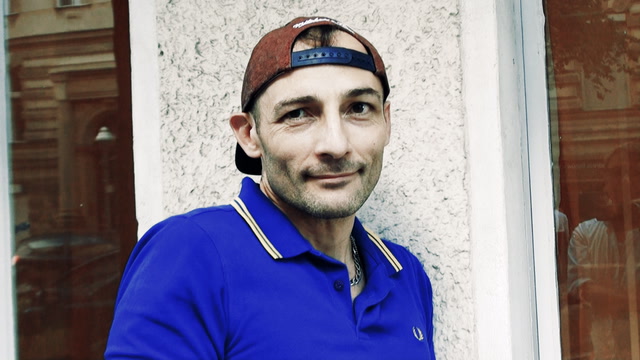
Melt my heart0:50
We witness a magical moment.
Christophe is putting his left hand on his chest. His eyes express true joy. The perfumer is almost bursting with pleasure while declaring his love for camomille. Christophe recalls the name Elizabeth Ganes, the founder of the high-quality brand StrangeLove NYC mentioned in her briefing: Melt my heart. At the same time the scent affects Christophe emotionally. He cannot control his feelings: Christophe literally embodies the claim: Melt my heart. In many cases a perfumer does not even know the name of the scent when creating. Does this little thing make a difference to the quality of the final composition? Based on this scene one might think so.
Fragrant upcycling2:56
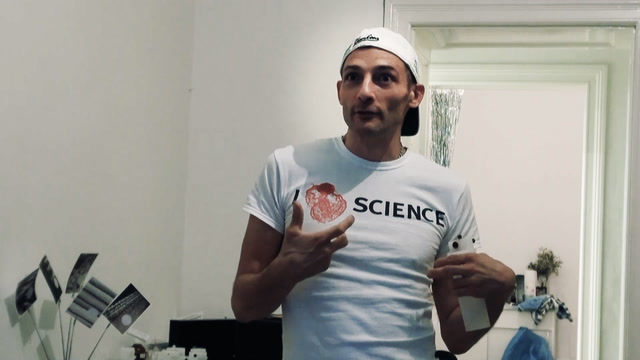
Fragrant upcycling2:56
Garbage smells.
Anyone with a nose knows that trash can stink. It is this truism of modern life that this clip challenges: Trash can smell nice. According to our fieldnotes Christophe casually once remarked: «The garbage often smells good. And: If you want to remake it, good luck». Hence, smelling trash is a recurring theme in a perfumer’s studio. This clip, however, shows how smelling a perfumer’s trash bin can open a discussion on sustainability in the fragrance industry and envision a future of fragrant upcycling.
Family dispute3:18

Family dispute3:18
This video empowers consumers to challenge the salesperson upon their next trip to a perfume store!
At most perfume stores it is common to classify scents by olfactory families. For instance, a department store perfume salesperson identifies the consumer’s passion for a flowery or spicy note and provides more samples from these olfactory families. In encounters such as this, a consumer might easily feel inferior to the salesperson’s expertise. However, in observing the perfume field, we have noticed that even among experts there are highly personal systems of classification that vary from perfumer to perfumer. We asked Christophe Laudamiel and Christoph Hornetz for a set of sample olfactory materials that could help us to better understand some of the everyday practices in the field. One of the perfumers came up with a list of materials grouped by families. One night, we discussed the list over wine and cheese with the two perfumers. On this occasion we learned how even two perfumers who had closely collaborated for several years can quickly disagree about commonly shared olfactory conventions and classifications. Bear in mind that the perfumers talk about single molecules whereas commercial perfumes are composed of several dozen different molecules. After watching the video the viewer should feel empowered to challenge the salesperson upon their next trip to a perfume store!
Taking perfumes to nightlife0:57
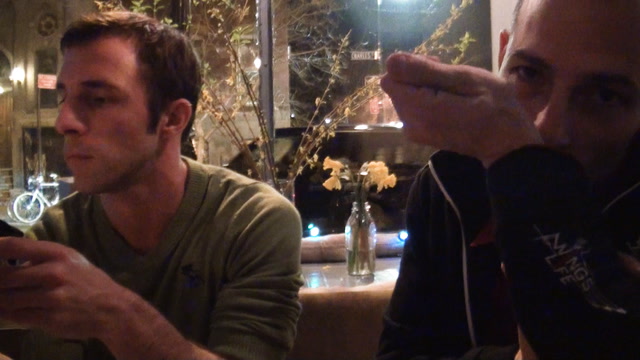
Taking perfumes to nightlife0:57
The ephemeral materiality of scent deeply impacts on how a perfumer can balance life and work. The perfumer’s body is a resource as well as a constraint.
Moving from paper testing strips to the skin can drastically change the overall experience of a perfume. What might be banal everyday knowledge has far reaching consequences for a professional perfumer. The skin of a perfumer is a constraint in the process because there are hardly more than three spots on each arm to spray. Once sprayed on the arm the scent will stay until it has completely evaporated. How long this takes is a matter of the scent’s molecular structure. Hence, a scent does not comply with an organization’s time regime. Instead, the involvement of the perfumer’s body makes the perfumer take his work home, or in this case, to the bar. In this clip, set in a bar late at night, Christophe notices a few molecules on his arm, and casually evaluates the set of recent creations. The undisciplined nature of scent blurs the boundaries of work and non-work.
What’s missing on the pizza?2:09
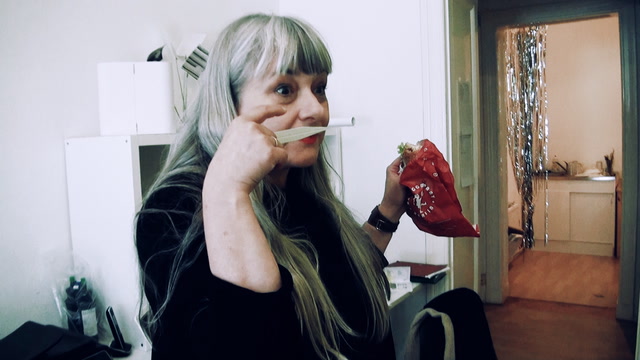
What’s missing on the pizza?2:09
«Imagine working in an open space while a neighboring workmate eats pizza!»
This was the experience we asked Christophe to capture with a scent. The pizza scent was later used in an exploratory study on the role of the sense of smell in the workplace. We knew that odors we encounter in everyday life are complex mixtures of different notes. Nevertheless, a few characteristic molecules are usually sufficient to evoke the generic smell substances, like coffee or chocolate. However, a generic smell can hardly capture a specific experience or workplace situation. In this session with Christophe, the assistant perfumer Ugo Charron and the scent journalist Denise Beaulieu we learn about the olfactory lifecycle of pizza.
Scent triangle: blotter-nose-formula0:42
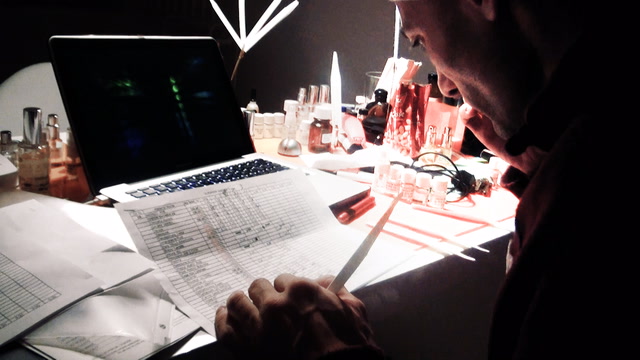
Scent triangle: blotter-nose-formula0:42
Fieldnotes are accounts that capture experiences and observations a researcher makes while doing fieldwork.
There is no one «natural», «correct» or even «objective» way for writing fieldnotes. Instead, depending on the researcher’s perception and interpretation, descriptions of the same situation can greatly differ. Yet, some observations are more compelling than others. Given our background in social and organization studies, the field of perfumery was completely new to us. Here is an excerpt from an early fieldnote Claus wrote when following Christophe’s silent practice as shown on this clip:
«The materiality and object-like qualities of scents are really special: on the one hand, the scent appears completely elusive, free of any kind of materiality whatsoever. Indeed, paper strips are necessary in order to make the scent tangible. If not, the scent would literally disappear in thin air, without anyone getting hold of it. Scents are unstable and changing: what smells flowery today, might tip over tomorrow into something fruity. What might appear good on the paper strip can prove unbearable on the skin. Depending on the time and the location, the scent changes its character. In this sense, the scent seems to be missing what usually characterizes an object: A scent is not stable, you can’t take it in your hand and it is usually highly subjective. BUT! The perfumer almost fights with the materiality of the scent: if the raw materials are missing on the shelves, the formula cannot be weighed. Yes indeed, the material proves to be the bottleneck. Even in the largest perfume houses, something is always missing, as Christophe mentioned earlier today. The scent’s materiality thus proves to be the boundary for the perfume development, a boundary that you cannot cross, that you simply have to live with. The materiality of the scent blocks. Scents cannot be recorded and replayed anytime. Scents also cannot be photographed and shown as picture to others. And they certainly cannot be digitalized. But still, one tries to trick the molecules. Because digital formulas are sent around the world as substitutes which outrun the physical logistics. This is what Christophe has done by emailing the formulas for Trust 31, 32, 33 to New York earlier today. But the formula is not a scetch/draft/layout that could be read. Even a perfumer cannot say anything about a scent by just looking at the formula. Instead, what is necessary in order to say something about the scent is the molecule: material, tangible. In this sense, a formula is different from a score. A formula can only be weighed – correctly or erroneously. There is no interpretation. The scent is only conveyable once the formula materializes into molecules. In this respect, a scent cannot be smelled sketchy or poorly. Either you smell the molecules of the weighed formula or you don’t. There is no bad resolution or compression of a scent, no transfer rate and no question of capacity. A scent is all or nothing, present or gone. So only when the formula materializes do we get to know the scent. And only then can we have an exchange about it on the telephone. If Christophe wants to talk to somebody about a scent, he needs to make sure that he himself and the other person he wants to talk to are exposed to the same molecules. When we smell we are taking molecules in. A scent is absorbed, by being incorporated. The scent becomes a part of our body – we inhale it and take it in. In this sense, a smell is something very personal. A scent molecule that I consume cannot be consumed by anyone else. But when you look at a picture, the same picture is also available to me without us being competitors – the same is true for listening/hearing. A bottle without a formula is meaningless. A formula without a bottle is also meaningless. You need blotter, formula and the human nose: A mutually interdependent scent triangle.»
A conversation with the material3:53
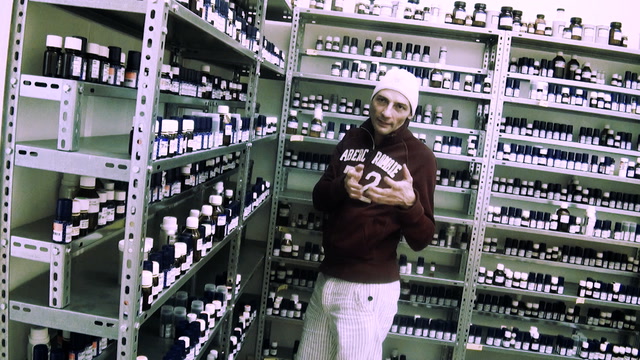
A conversation with the material3:53
Learning raw materials a perfumery student begins to keep track of associations the smell of these ingredients may trigger.
Short entries in a spreadsheet capture descriptive remarks as well as similarities and comparisons between different materials. In this way a perfumer systematically builds up a network of associations that serve various purposes throughout a professional career. In the case of Christophe Laudamie, we often encountered how he maintained his knowledge base and made note of many new surprises by documenting them in his spread sheet. When searching for possible ingredients Christophe searches through the spreadsheet: «Papery» shows up roughly 30 times. Christophe narrows this down to a shortlist of 5-10 ingredients. He then goes to the lab: «Each bottle contains a whole world - a world by itself», Christophe once remarked. This video shows how Christophe explores the worlds of a few bottles and engages in a conversation with the materials on the shelves.
Key quotes with this tag
Images with this tag

Courtesy of scentculture.tube
Christophe Laudamiel & Christoph Hornetz attending a panel discussion in the context of The Art of Scent at the Museum of Arts and Design, New York. During the event it was remarkable how the panellists involved Christophe who was only in the audience and forwarded questions to him as if he were on the panel.

Courtesy of scentculture.tube
Sebastian Fischenich, creative director of Humiecki & Graef, observed by Claus Noppeney.

Courtesy of scentculture.tube
Christophe Laudamiel, Nada Endrissat & Claus Noppeney discussing research results at an olfactory storytelling festival, Solothurn 2019.

Courtesy of scentculture.tube
Snapshot of the visual concept during a debriefing interview with the researchers.

Courtesy of scentculture.tube
Sebastian Fischenich, creative director of Humiecki & Graef, interviewed by Nada Endrissat.

Courtesy of scentculture.tube
Tripod installation at Belepok, Zurich.

Courtesy of scentculture.tube
A photo taken while having lunch in the field.

Courtesy of scentculture.tube
A discussion on the value of judging and criticism in perfumery at the Esxence tradefair, Milano. A panel with Saskia Wilson-Brown, Bodo Kubartz, Marlen Harrison initiated by Claus Noppeney.

Mike Peyton: The New Scientist.
Constructing scientific facts.

Courtesy of scentculture.tube
Claus Noppeney engaging with actors in the field at the Institute for Art and Olfaction, Los Angeles.

Courtesy of scentculture.tube
Sebastian Fischenich, creative director of Humiecki & Graef, observed by Nada Endrissat.

Courtesy of scentculture.tube
Communicating in the field: SMS on Claus’ mobile phone.

Courtesy of scentculture.tube
En passant, Christoph Hornetz and Christophe Laudamiel are smelling and sharing first impressions.

Courtesy of scentculture.tube
Nada Endrissat interviewing Christoph Hornetz at Dreamair, New York.

Courtesy of scentculture.tube
Christophe Laudamiel smelling at his desk.

Courtesy of scentculture.tube
Claus Noppeney interviewing Christophe Laudamiel at Dreamair, Berlin.

Courtesy of scentculture.tube
Saskia Wilson-Brown and Claus Noppeney during a session at the Institute for Art and Olfaction. It happened to be Claus’ birthday as the cake indicates.

Courtesy of scentculture.tube
Panoptical installation at Dreamair, Berlin.

Courtesy of scentculture.tube
How do you see the field? And where are you? These and similar questions are a useful starting point for mapping the field of scent culture. This visualization was developed during a session with Claus Noppeney at the Institute for Art and Olfaction.

Courtesy of scentculture.tube
Agnieszka Dabrowska writing a scent inspired story during writing workshop at Solothurn Literary Days, 2019.
All Tags
- Affect
- Ambience
- Ambiguity
- Analogy
- Analyzing
- Artifact
- Associating
- Beyond words
- Briefing
- Christophe Laudamiel
- Classifying
- Consuming
- Creating
- Culture
- Deciding
- Desk work
- Embodiment
- Ephemeral
- Evaluating
- Experimenting
- Hemingway
- Humiecki & Graef
- Industry
- Ingredient
- Interaction
- Labelling
- Laboratory
- Metal
- Modifications
- Mundane work
- Orange Flower
- Paper
- Presenting
- Sense-making
- Shalimar
- Smelling
- Storytelling
- Still life
- Strangelove NYC
- Translating
- Visual
- we are all children
- Words
